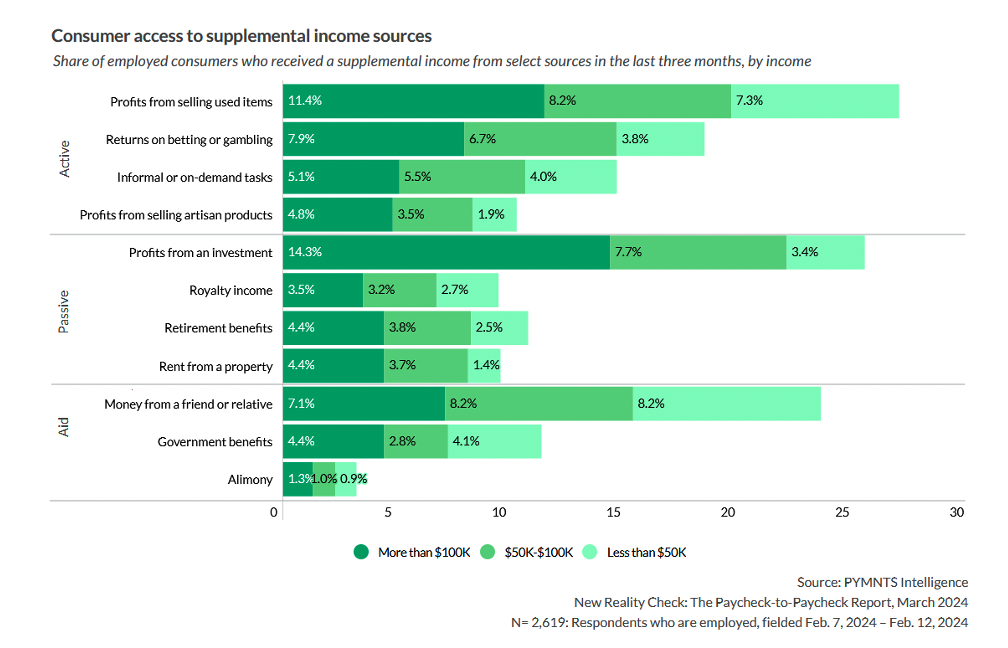30% of US Consumers Count on Side Hustles to Pay the Bills

Although inflation is down to 3.3% from its July 2022 peak of 9.1%, many consumers in the United States are still working some kind of side hustle to make ends meet.
For many of them, that auxiliary income is nearly essential.
According to the latest PYMNTS Intelligence Paycheck-to-Paycheck Report, “High-Income Consumers Lead Surprising New Data on Side Hustles,” 30% of consumers who now earn extra cash on the side said losing that additional income would have a very or extremely negative impact on their financial stability. That percentage rose to 53% for consumers who live paycheck to paycheck and find meeting their financial obligations challenging.
But it’s not just those struggling who are feeling a pinch right now. The report, which drew on insights from a survey of 4,203 consumers, determined that 26% of high-income earners (those making more than $100,000 each year) sought out extra income in recent months.
What may be surprising is that these high-income consumers are not coasting on investments — they are the group most likely to receive funds from active sources, such as reselling items, carrying out informal tasks or making artisan products. Twenty-two percent reported earning additional money through active means, while 20% said they earned additional money through passive income. That suggests they may be drawn to these easy-to-access (and perhaps even enjoyable) methods of making money.
For comparison, about 16% of those earning less than $50,000 earned supplemental money through active means, while 12% earned passive income.
 Profits from investments are the top passive supplemental income source for high-income consumers. Fourteen percent of high-income consumers received investment earnings in recent months, while 3.4% of low-income consumers did the same.
Profits from investments are the top passive supplemental income source for high-income consumers. Fourteen percent of high-income consumers received investment earnings in recent months, while 3.4% of low-income consumers did the same.
The gap closes but is still present when considering active income sources. Although earning money by selling used items appealed to 11.4% of high-income earners, for example, 8.2% of those earning between $50,000 and $100,000 each year and 7.3% of low-income consumers did the same.
Turning to friends and family to help financially is another resource that consumers have in common regardless of income. While about 7% of high-income consumers had to seek out support from friends and relatives, 8.2% of everyone earning less than $100,000 annually did the same, suggesting that even though inflation may be decreasing, the need to occasionally lean on others for help may never go away.

